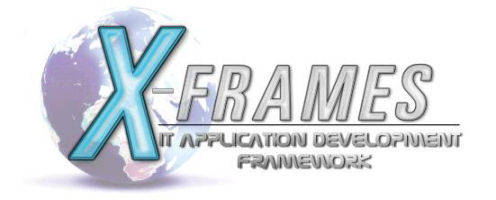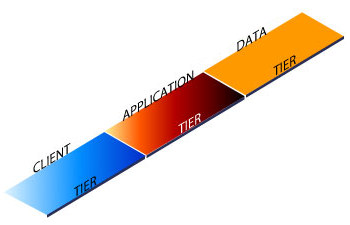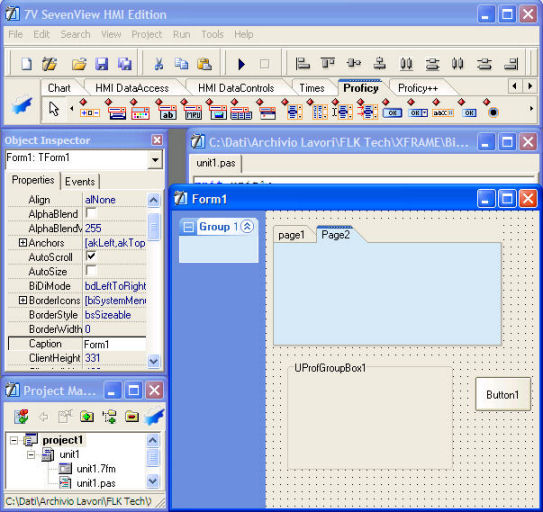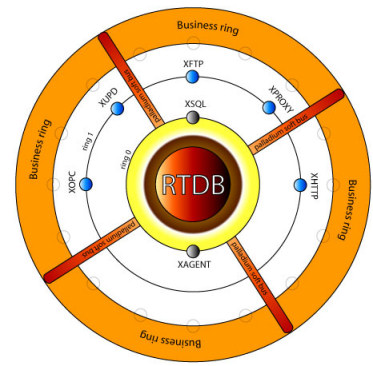
XFrames is a comprehensive productivity layer that simplifies building of
complex IT Client /Server application n-tier.
It simplifies building applications as a set of business services with Web, Scripting (7Script,VBscript,JScript), and Rich Client interfaces.
XFrames accelerates development with free modules, already implemented and ready to use that you'd otherwise have to code, test, and debug by hand.
Since its implementation is based on standards and its features embody years of experience from FLK's own business application developers.
Your XFrame-powered applications are high-performance, well-architected, and portable.
XFrame provides a flexible, end-to-end application infrastructure, with an integrated RAD visual design tools,
that accommodates your technology choices in each architectural layer, and help you throughout the complete application lifecycle management.
XFRAMES Environment
The XFrames environment is a client/server system based on Microsofts DNA standard,which is a multi-tier architecture.
Client/Server
Client/server describes the relationship between two computer programs. A client is the
requesting program, or user, which requests data from another program, the server. The server
receives a request for data, processes the request, and returns the data to the client. A server
program provides data to client programs in the same computer or in other computers. The
computer that the server program runs on is also referred to as a server (though it may contain
a number of server and client programs). For example, the user of a Web browser is effectively
making client requests for pages from servers all over the Web. The browser itself is a client in
its relationship with the computer that is receiving and returning the requested files. The
computer handling the request and sending the Web pages back to the user is the server.
Multi-Tier
Multi-tier is a term that applies to a computer system where the software is layered, by
function, among multiple computers. Generally, each of these layers resides on its own
computer. The most common multi-tier architecture is the client/server system, which is a
two-tier system; the user interface is on one tier (the client) and the business process and data
storage are on the other tier (the server).
Windows DNA architecture supports three tiers, or layers:
User interface
Business process
Data storage
Architecture
XFrames conforms to the Windows DNA three-tier standard:
- User interface: XFrames Client
- Business process (the application): XFrames Server
- Data storage: Database Server, PLCs, Embedded Device
The following diagram illustrates a XFrames environment:
|
 |
Benefits
XFrames multi-tier architecture offers major benefits:
- Each server can have one or more application.
- The applications can be developed and maintained from any of the clients.
- Modifications made to any application are pushed to any clients looking at that application.
- A XFrames system can be scaled or expanded, based on the needs of the business.
A small application can exist with all tiers on a single computer. A large application may
require multiple servers. For example, the middle tier for the servers can have alarming on
one server, trending on another, and so forth. And, because the application database is
separate, the data-storage tier can be scaled to grow with the business.
|
XFRAMES n-Tier
|
 |
Client Tier - User Interface- Client Builder
The XFrame Client Builder module aids the development
of sophisticated operator interfaces with a concept of object-oriented control. MMI can
be used as a basis for developing a standard application for an end user. In an application
implemented with an object-oriented control
philosophy, the user can only have one object selected at a time and it is clear which
object it is.
Of course, there are some general functions and components that are always available, such as
log in, log out, go to alarm screen, and screen navigation to name a few. The general
functions that are available may vary depending upon the privileges of the person
viewing the screen. So, if someone doesnt have access to a particular screen, he or she
doesnt have access to a button to go to that screen.
The client builder use a robust and mature Sevenview Technology.

Application Tier - Business ring process- Tasks
XFrames is a set of programs that perform a specific activity in
the automation process, such as:
- Reading and writing of data to external devices (PLCs, RTUs, Embedded Device)
- Collection and storage of data
- Alarming
- Generating reports
- Geo Code Plant
These programs are referred to as modules or tasks because they are independent programs that do only
one specific job or task alone, but together make an application fully functional. You access the tasks
through the Configuration Explorer, one of the XFrames application-development tools.
|
 |
Data Tier - Data Store
Since this has been deemed the Age of Information, and since all information needs to be stored, the
Data Tier described above is usually an essential part.
Basically, Data Tier is your
Database Management System (DBMS) -- SQL Server, Access, Oracle, MySql, plain text (or binary) files.
This tier can be as complex and comprehensive as high-end products such as SQL Server
and Oracle, which do include the things like query optimization, indexing, etc., all the way down to the
simplistic plain text files (and the engine to read and search these files).
This layer is only intended to deal with
the storage and retrieval of information. No business logic in here, no matter how tempting.
XFrames can use 3 different DBMS :

|
Note that some vertical distribution of XFrames default install an ORACLE XE datastore.
|
|
|
|
|
